Giới thiệu
Sản xuất viên nang dược phẩm đòi hỏi sự chính xác và nhất quán. Ngay cả những sai sót nhỏ về liều lượng cũng có thể dẫn đến hậu quả nghiêm trọng cho bệnh nhân. Việc hiểu và giải quyết những cạm bẫy thường gặp trong sản xuất viên nang là điều cần thiết đối với các công ty dược phẩm cam kết về chất lượng sản phẩm và an toàn cho bệnh nhân. Khi bạn vượt qua những phức tạp của
sản xuất viên nang
việc nhận biết các lỗi tiềm ẩn và triển khai các giải pháp hiệu quả trở nên tối quan trọng để tuân thủ quy định và tạo niềm tin cho người tiêu dùng.
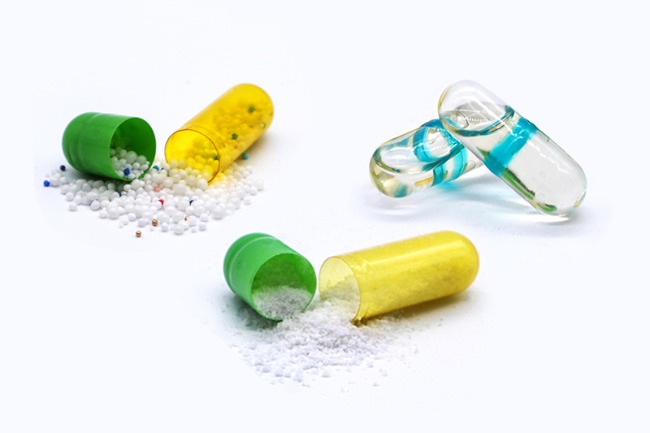
Hiểu về lỗi liều lượng viên nang
Bản chất quan trọng của việc định lượng chính xác
Khi nói đến viên nang dược phẩm, độ chính xác về liều lượng ảnh hưởng trực tiếp đến kết quả điều trị. Những sai lệch nhỏ chỉ vài miligam cũng có thể tạo nên sự khác biệt giữa hiệu quả điều trị và nguy cơ gây hại tiềm ẩn. Các cơ quan quản lý trên toàn thế giới, bao gồm FDA và EMA, áp dụng các tiêu chuẩn nghiêm ngặt về tính đồng nhất của liều lượng, thường yêu cầu sai lệch trong phạm vi ±10% so với liều lượng ghi trên nhãn. Những yêu cầu này tồn tại vì sai sót về liều lượng có thể dẫn đến thất bại điều trị, phản ứng bất lợi hoặc thậm chí nguy hiểm đến tính mạng, tùy thuộc vào thành phần dược phẩm hoạt tính (API).
Nguyên nhân phổ biến gây ra sự không nhất quán về liều lượng
Có nhiều yếu tố góp phần gây ra sự thay đổi liều lượng trong quá trình sản xuất viên nang. Việc hiểu rõ những nguyên nhân gốc rễ này sẽ giúp xây dựng các chiến lược phòng ngừa hiệu quả. Các nguyên nhân phổ biến nhất bao gồm:
-
Tính chất dòng chảy của bột
: Vật liệu có đặc tính chảy kém thường dẫn đến việc nạp liệu không đồng đều. Bột kết dính có thể tạo thành cầu hoặc lỗ chuột trong phễu, dẫn đến tốc độ nạp liệu không đều và trọng lượng nạp liệu không đồng đều.
-
Điều kiện môi trường
: Độ ẩm và nhiệt độ dao động ảnh hưởng đến mật độ và độ chảy của bột. Ngay cả những thay đổi nhỏ về điều kiện môi trường cũng có thể ảnh hưởng đến độ đồng nhất của trọng lượng bột trong suốt một lô sản xuất.
-
Các vấn đề hiệu chuẩn thiết bị
: Thiết bị được hiệu chuẩn hoặc bảo trì không đúng cách sẽ không cung cấp liều lượng đồng đều. Nếu không được kiểm tra và điều chỉnh thường xuyên, cơ chế định lượng sẽ dần lệch khỏi các thông số đã thiết lập.
-
Lỗi của người vận hành
: Sự can thiệp thủ công, đặc biệt là trong các quy trình bán tự động, gây ra sự biến thiên về mặt con người. Áp suất nén không đồng đều hoặc việc điều chỉnh máy không đúng cách của người vận hành góp phần đáng kể vào sự biến thiên liều lượng.
Hậu quả thực tế của lỗi liều lượng
Hậu quả của sai sót liều lượng không chỉ giới hạn ở những lo ngại về chất lượng mà còn ảnh hưởng nghiêm trọng đến kinh doanh và đạo đức. Dữ liệu ngành gần đây cho thấy số vụ thu hồi liên quan đến liều lượng đã tăng 23% từ năm 2019 đến năm 2023, trong đó sản phẩm viên nang chiếm khoảng 18% trong số đó. Mỗi vụ thu hồi khiến các công ty dược phẩm thiệt hại trung bình từ 500.000 đến 5 triệu đô la chi phí trực tiếp, chưa bao gồm thiệt hại về uy tín thương hiệu và mất thị phần. Quan trọng hơn, những sai sót này gây nguy hiểm cho sức khỏe của bệnh nhân, có khả năng dẫn đến thất bại điều trị hoặc phản ứng bất lợi.
Rủi ro an toàn liên quan đến thiết bị trong sản xuất viên nang
Nguy cơ cơ học
Thiết bị đóng viên nang, đặc biệt là các mẫu cũ không được trang bị bảo vệ đầy đủ, tiềm ẩn nhiều rủi ro cơ học cho người vận hành. Các bộ phận chuyển động như đĩa định lượng, chốt nén và cơ cấu chuyển viên nang có thể gây ra chấn thương do kẹt nếu khóa liên động an toàn bị bỏ qua hoặc hỏng. Thống kê từ các cơ sở sản xuất cho thấy khoảng 15% chấn thương trên sàn sản xuất liên quan đến tương tác cơ học với thiết bị không được bảo vệ đầy đủ. Mức độ nghiêm trọng của những chấn thương này dao động từ vết bầm tím nhẹ đến chấn thương đè ép nghiêm trọng cần can thiệp y tế.
Rủi ro lây nhiễm chéo
Nhiễm chéo giữa các lô sản phẩm là mối lo ngại về cả an toàn và chất lượng. Nếu không có quy trình xác nhận vệ sinh phù hợp, vật liệu còn sót lại từ các lô sản phẩm trước có thể làm nhiễm bẩn các sản phẩm tiếp theo. Rủi ro này đặc biệt nghiêm trọng khi chuyển đổi giữa các thành phần hoạt tính khác nhau, có khả năng gây dị ứng hoặc các hợp chất không tương thích. Dữ liệu trong ngành cho thấy khoảng 8% các cuộc điều tra chất lượng sản phẩm liên quan đến các vấn đề nhiễm chéo, trong đó quy trình vệ sinh thiết bị không đầy đủ được xác định là nguyên nhân gốc rễ chính.
Mối quan tâm về phơi nhiễm bụi
Việc xử lý bột trong quá trình đóng viên nang tạo ra các hạt lơ lửng trong không khí, gây nguy hiểm cho người vận hành khi hít phải. Các thành phần dược phẩm hoạt tính có nồng độ cao có thể gây ra các vấn đề sức khỏe nghề nghiệp ngay cả ở mức độ phơi nhiễm thấp. Hệ thống ngăn bụi phù hợp là rất cần thiết, tuy nhiên, khoảng 12% cơ sở sản xuất báo cáo các biện pháp kiểm soát bụi không đầy đủ trong quá trình kiểm tra định kỳ. Việc tiếp xúc lâu dài có thể dẫn đến dị ứng, các vấn đề về hô hấp hoặc các tác động xấu khác đến sức khỏe, tùy thuộc vào từng hợp chất cụ thể được xử lý.
Vai trò của thiết bị tiên tiến trong việc giảm thiểu rủi ro
Lợi ích của máy đóng viên nang bán tự động
Máy đóng viên nang bán tự động
cung cấp một phương pháp cân bằng giữa điều khiển thủ công và độ chính xác tự động. Các máy này thường hoạt động ở tốc độ 3.000-25.000 viên nang mỗi giờ, phù hợp cho các dây chuyền sản xuất vừa và nhỏ. Phương pháp bán tự động mang lại một số lợi thế:
-
Cải thiện tính nhất quán của liều lượng
: So với các phương pháp thủ công hoàn toàn, máy bán tự động giảm thiểu biến thiên liều lượng bằng cách áp dụng hệ thống định lượng cơ học với các thông số có thể điều chỉnh. Hầu hết các hệ thống bán tự động hiện đại đều đạt hệ số biến thiên dưới 3% về độ đồng đều trọng lượng, tốt hơn đáng kể so với mức 5-8% thường thấy ở các phương pháp thủ công.
-
-
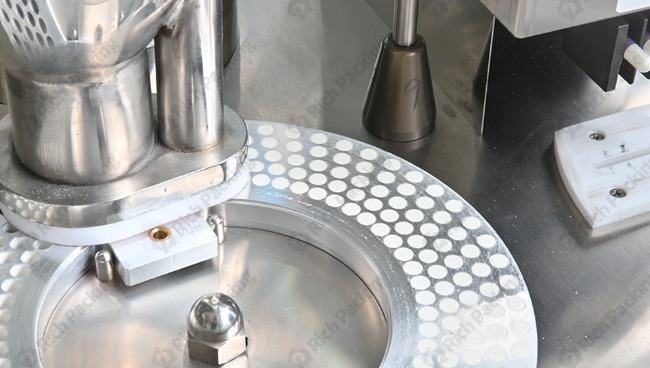
-
-
Giảm sự phụ thuộc của người vận hành
: Mặc dù vẫn cần sự giám sát của con người, những máy này loại bỏ nhiều yếu tố bất thường của việc chiết rót thủ công. Cơ chế định lượng cơ học đảm bảo áp suất nén và thể tích chiết rót đồng đều bất kể sự mệt mỏi của người vận hành hay sự thay đổi kỹ thuật.
-
Độ chính xác tiết kiệm chi phí
: Với chi phí đầu tư thường từ 15.000 đến 50.000 đô la, thiết bị bán tự động mang lại những cải tiến chất lượng đáng kể mà không cần đầu tư vốn như hệ thống hoàn toàn tự động. Đối với các nhà sản xuất nhỏ hoặc các ứng dụng R&D, điều này thể hiện sự cân bằng tối ưu giữa chi phí và độ chính xác.
-
-
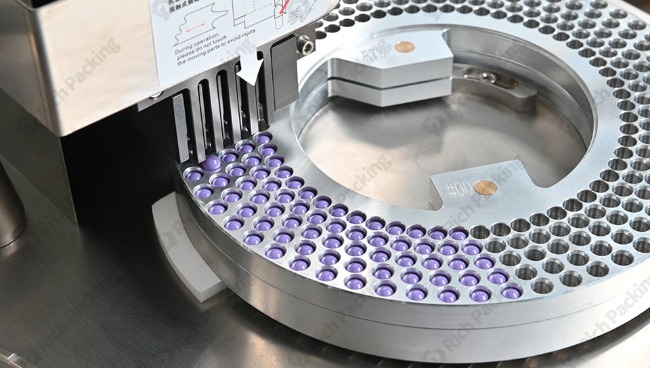
-
-
Sản xuất linh hoạt
: Những máy này có thể thay đổi công thức với thời gian ngừng hoạt động tối thiểu, thường chỉ mất 15-30 phút để chuyển đổi giữa các sản phẩm. Tính linh hoạt này đặc biệt hữu ích cho các nhà sản xuất theo hợp đồng xử lý danh mục sản phẩm đa dạng.
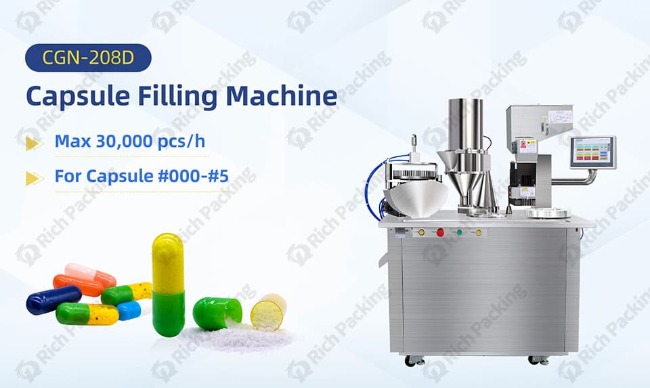
Ưu điểm của máy đóng viên nang tự động
Máy đóng viên nang hoàn toàn tự động
đại diện cho đỉnh cao của hiệu quả sản xuất và độ chính xác liều lượng. Hoạt động ở tốc độ từ 30.000 đến hơn 200.000 viên nang mỗi giờ, những hệ thống tinh vi này tích hợp nhiều cơ chế kiểm soát chất lượng:
-
Độ chính xác liều lượng vượt trội
: Các máy tự động tiên tiến sử dụng hệ thống kiểm tra trọng lượng liên tục theo dõi trọng lượng nạp, tự động điều chỉnh các thông số định lượng để duy trì thông số kỹ thuật mục tiêu. Khả năng hiệu chỉnh động này giúp giảm độ biến thiên trọng lượng xuống hệ số biến thiên dưới 1,5%, đảm bảo tính đồng nhất liều lượng vượt trội.
-
-
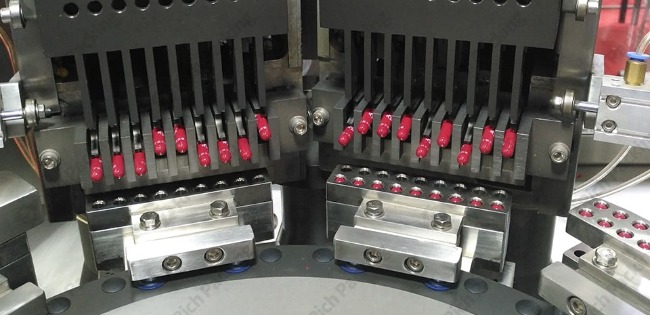
-
-
Phát hiện lỗi toàn diện
: Hệ thống thị giác tích hợp kiểm tra từng viên nang để phát hiện các khuyết tật bao gồm vết nứt, đóng không đúng cách và các vấn đề về kích thước. Các hệ thống này có thể phát hiện và loại bỏ các bất thường với độ chính xác 99,9%, ngăn chặn các sản phẩm lỗi đến tay người tiêu dùng.
-
Giảm thiểu ô nhiễm chéo
: Máy móc tự động hiện đại được trang bị hệ thống khép kín với công nghệ ngăn chặn chuyên dụng giúp giảm thiểu tối đa sự tiếp xúc với sản phẩm. Hệ thống làm sạch tự động với công thức chu trình đã được kiểm chứng đảm bảo loại bỏ hoàn toàn vật liệu còn sót lại giữa các mẻ, giảm nguy cơ lây nhiễm chéo lên đến 98% so với quy trình làm sạch thủ công.
-
Khả năng tích hợp dữ liệu
: Máy chiết rót tự động ngày nay kết nối với hệ thống thực thi sản xuất để cung cấp dữ liệu sản xuất theo thời gian thực. Kết nối này cho phép xác minh quy trình liên tục và thiết lập các bản ghi kiểm toán minh bạch để tuân thủ quy định, giảm thiểu sai sót trong ghi chép tài liệu khoảng 85% so với hệ thống giấy tờ.
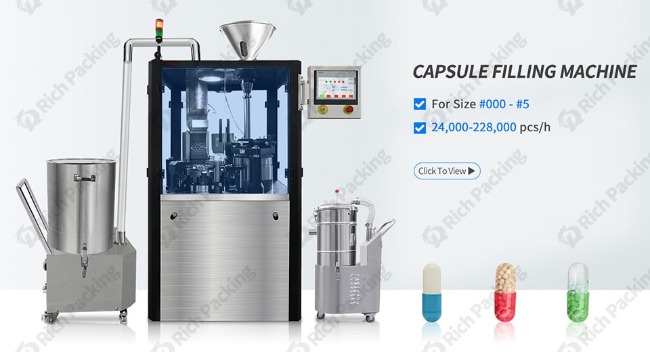
Thực hiện các chiến lược giảm thiểu rủi ro
Phương pháp xác thực quy trình
Quản lý rủi ro hiệu quả bắt đầu bằng việc xác nhận quy trình toàn diện. Thay vì chỉ dựa vào thử nghiệm sản phẩm cuối cùng, các quy trình được xác nhận đảm bảo chất lượng đồng nhất trong suốt chu trình sản xuất. Một giao thức xác nhận mạnh mẽ thường bao gồm:
-
Trình độ lắp đặt (IQ)
: Xác minh thiết bị được lắp đặt đúng theo thông số kỹ thuật của nhà sản xuất. Điều này bao gồm kết nối tiện ích, điều kiện môi trường và các tính năng an toàn.
-
Đánh giá hoạt động (OQ)
: Chứng minh thiết bị hoạt động đúng như mong đợi trong toàn bộ phạm vi hoạt động. Thử nghiệm này kiểm tra thiết bị ở các thông số tối thiểu, tối đa và mục tiêu để đảm bảo hiệu suất nhất quán.
-
Đánh giá hiệu suất (PQ)
: Xác nhận thiết bị hoạt động ổn định trong điều kiện sản xuất thực tế. Điều này thường bao gồm nhiều lần sản xuất với phân tích thống kê kết quả.
-
Xác thực vệ sinh
: Xác minh rằng quy trình vệ sinh loại bỏ hiệu quả tất cả vật liệu còn sót lại giữa các lô. Điều này ngăn ngừa nhiễm chéo và đảm bảo độ tinh khiết của sản phẩm.
Triển khai Kiểm soát Quy trình Thống kê
Việc triển khai Kiểm soát Quy trình Thống kê (SPC) cung cấp cảnh báo sớm về sự sai lệch quy trình trước khi vượt quá thông số kỹ thuật. Bằng cách giám sát các thông số quan trọng theo thời gian thực, nhà sản xuất có thể chủ động điều chỉnh thay vì bị động. Việc triển khai SPC hiệu quả bao gồm:
-
Xác định thông số quan trọng
: Xác định các biến số quy trình nào ảnh hưởng đáng kể nhất đến chất lượng sản phẩm. Đối với quy trình chiết viên nang, các biến số này thường bao gồm trọng lượng chiết, lực đóng viên nang và điều kiện môi trường.
-
Thiết lập biểu đồ kiểm soát
: Thiết lập giới hạn kiểm soát dựa trên các nghiên cứu về năng lực quy trình thay vì chỉ dựa trên giới hạn thông số kỹ thuật. Phương pháp này xác định sự trôi dạt của quy trình trước khi xảy ra kết quả ngoài thông số kỹ thuật.
-
Kế hoạch lấy mẫu thường xuyên
: Áp dụng tần suất và quy mô mẫu phù hợp dựa trên khối lượng sản xuất và đánh giá rủi ro. Các sản phẩm có rủi ro cao hơn cần được giám sát thường xuyên hơn.
-
Giao thức phân tích dữ liệu
: Thiết lập các quy trình rõ ràng để xem xét biểu đồ kiểm soát và phản hồi các xu hướng. Can thiệp sớm khi đạt đến giới hạn cảnh báo sẽ ngăn ngừa các sai lệch vượt quá giới hạn hành động.
Đào tạo và Quy trình vận hành tiêu chuẩn
Yếu tố con người vẫn đóng vai trò quan trọng ngay cả trong môi trường tự động hóa cao. Các chương trình đào tạo toàn diện và quy trình vận hành tiêu chuẩn (SOP) chi tiết đảm bảo thực hiện quy trình một cách nhất quán:
-
Đào tạo cụ thể về thiết bị
: Người vận hành không chỉ cần hiểu cách vận hành thiết bị mà còn phải hiểu nguyên lý hoạt động của nó. Kiến thức này giúp xử lý sự cố và điều chỉnh quy trình tốt hơn.
-
Đào tạo nhận dạng lỗi
: Đào tạo người vận hành cách nhận biết sớm các dấu hiệu sai lệch quy trình trước khi chất lượng bị ảnh hưởng. Việc giám sát bằng con người này bổ sung cho các hệ thống tự động.
-
Thực hành tài liệu
: Việc triển khai các quy trình vận hành chuẩn (SOP) rõ ràng, súc tích với các phương tiện trực quan giúp giảm thiểu lỗi diễn giải. Các hệ thống điện tử với trình tự bắt buộc có thể đảm bảo tuân thủ quy trình hơn nữa.
-
Đào tạo bồi dưỡng thường xuyên
: Sự suy giảm kiến thức diễn ra tự nhiên theo thời gian. Việc đào tạo lại theo lịch trình, đặc biệt là sau những thay đổi về quy trình, sẽ duy trì sự xuất sắc trong vận hành.
Phân tích so sánh: Chiết rót thủ công so với chiết rót bán tự động so với chiết rót tự động
So sánh các chỉ số hiệu suất





